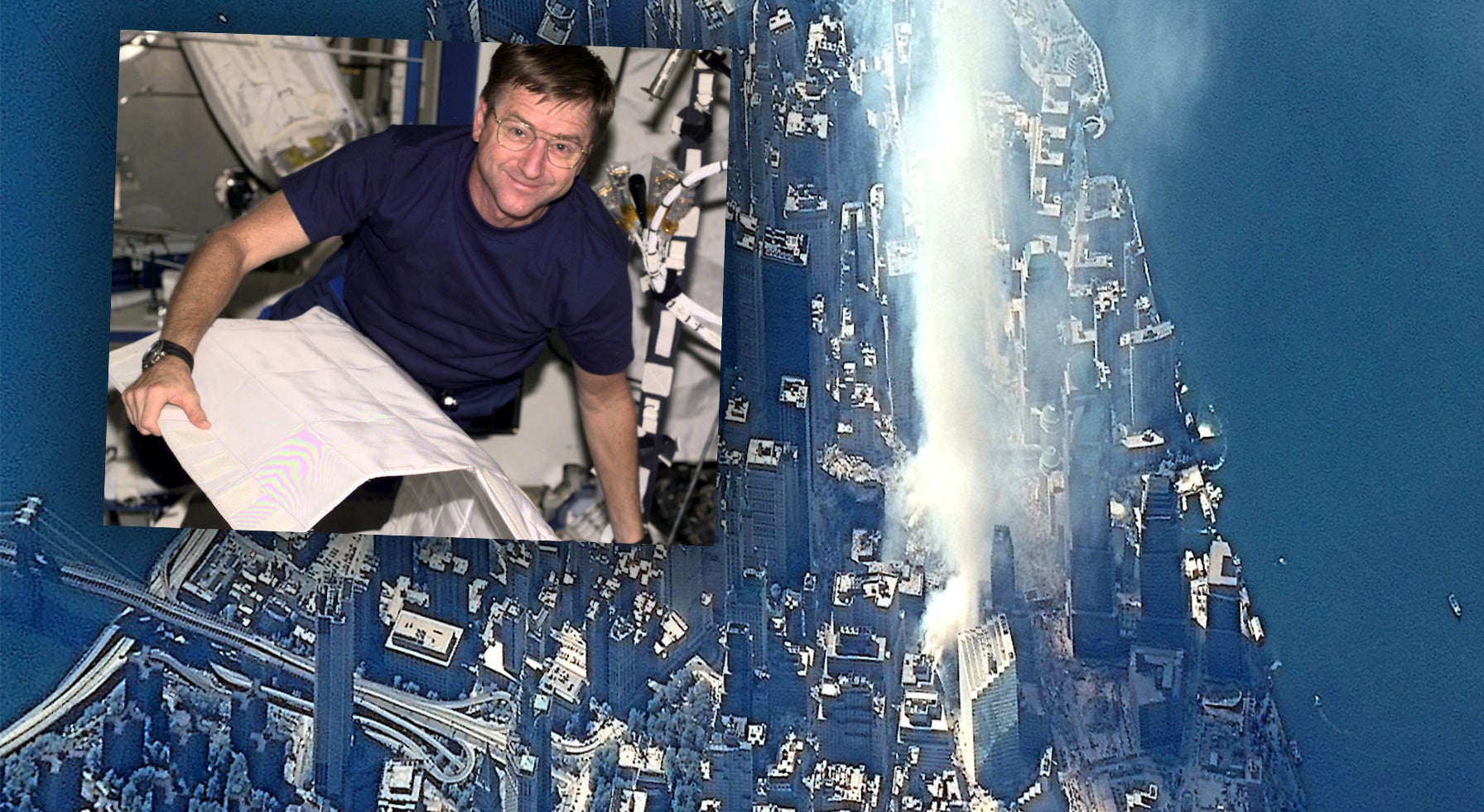This year marks the 20th anniversary of the world-changing 9/11 terrorist attacks in New York City and Washington, D.C. It is always a solemn occasion that is often fraught with conflicting emotions. It is also typically a time for very personal reflections on the attacks, the immediate aftermath, and the far-reaching impacts that continue to be felt today. Every American who is old enough to remember has a story about where they were when it happened. Only one American, though, former NASA astronaut Frank Culbertson, was not on Earth at the time and bore witness to the tragedy from the International Space Station, not always knowing exactly what was going on.
Culbertson shared his recollections about that fateful day with Rich Cooper, the Space Foundation’s Vice President of Communications and co-host of that organization’s Space4U podcast, on the sidelines of the 36th annual Space Symposium, which was held in Colorado Springs, Colorado in August. You can listen to the full 9/11 edition of the Space4U podcast featuring Culbertson here.
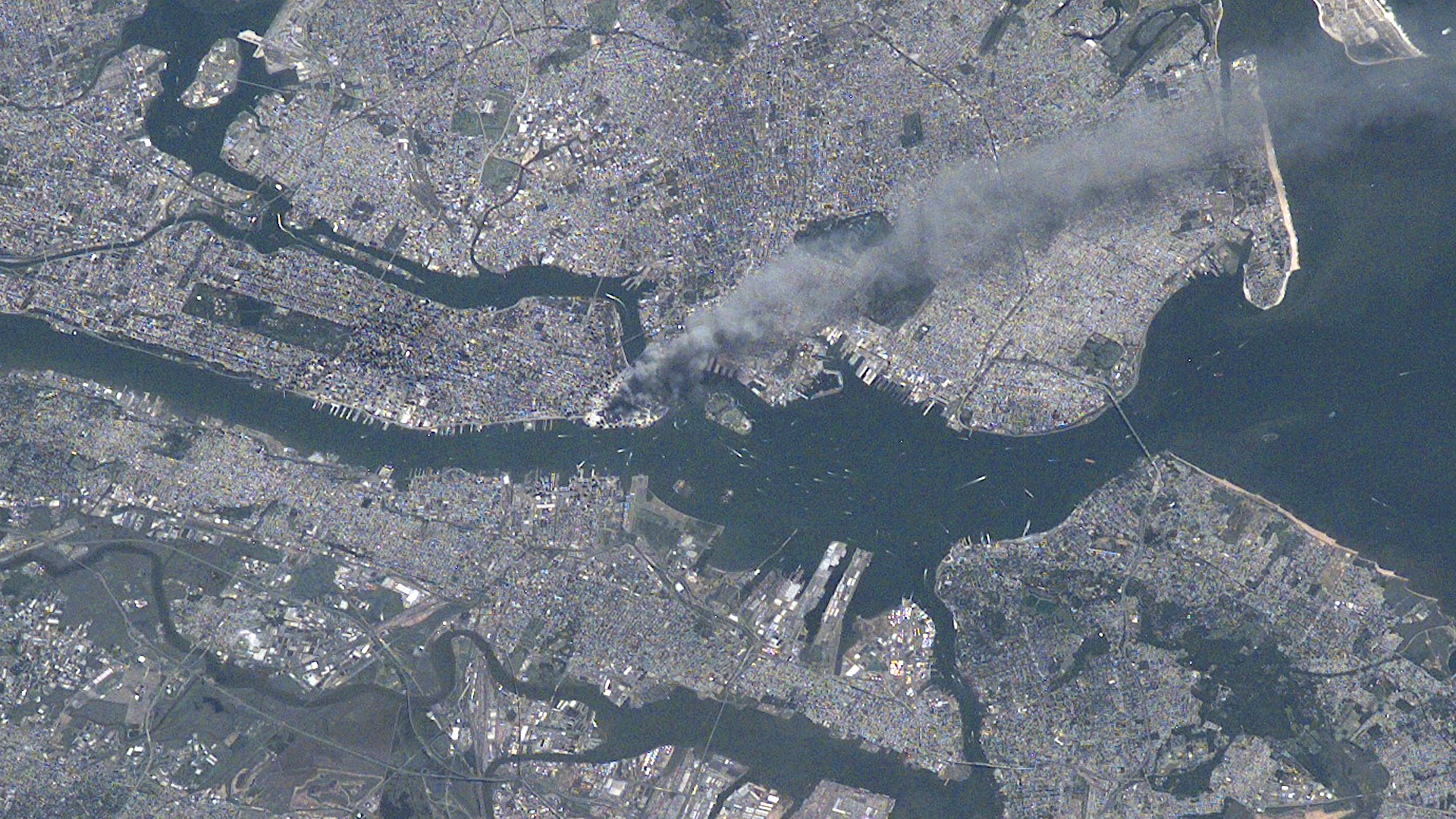
In addition to being a former astronaut, Culbertson is a retired U.S. Navy aviator who served during the Vietnam War and who is also a graduate of the Naval Test Pilot School. Prior military service is not at all uncommon among NASA astronauts. He recently retired as President of the Space Systems Group at Northrop Grumman Innovation Systems, but continues to run his own company, Higher Flight LLC, and is also currently a member of the Space Foundation’s Executive Committee.
“The 10th was just a regular day. We were preparing to receive a new module,” Culbertson told Cooper to start his story. “And so we’d been going through the checklist for that and making sure that everything was ready on the station for that went through our normal routines, you know, worked out some experiments and, and did some communications with the ground.”
At the time, Culbertson was the mission commander of Expedition 3 to the International Space Station (ISS). Of the three individuals on the station, he was the only American. The other two people on board, Vladimir Dezhurov and Mikhail Tyurin, were Russian cosmonauts. This was Culbertson’s third trip into space, having also been part of Space Shuttle missions in 1990 and 1993.
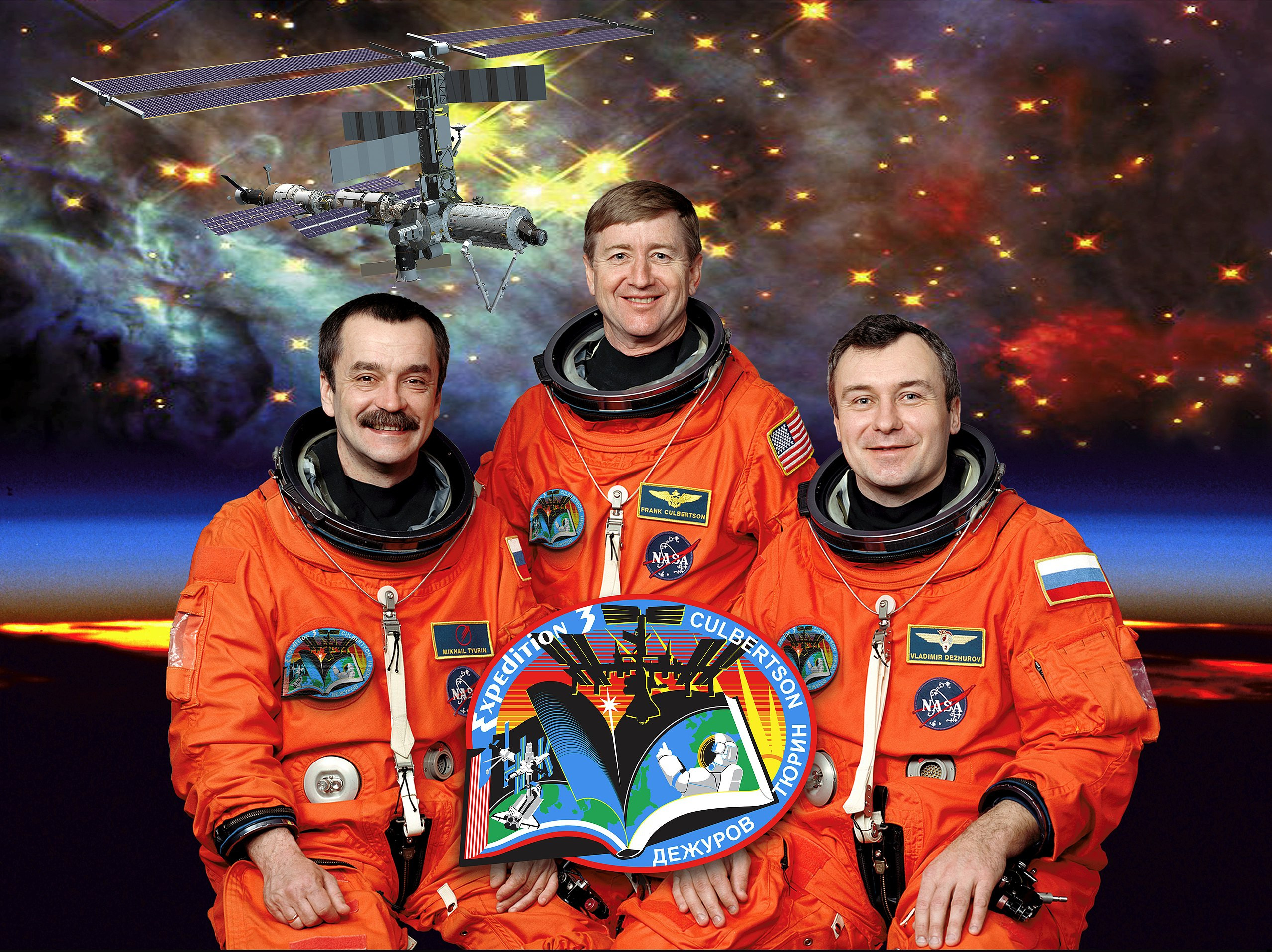
“On the 11th, my first task of the day was to, after normal stuff, you know, maintenance and things, was to… conduct physicals, medical physicals on all the crew,” Culbertson recalled. “I was basically the flight surgeon, yeah, the commander and the flight surgeon, but my dad was a physician so I think that justified it.”
Culbertson explained to Cooper that, at the time, this medical data was collected every 30 days or so during missions to the ISS. As it turned out, Sept. 11, 2001, was their 30th day in orbit.
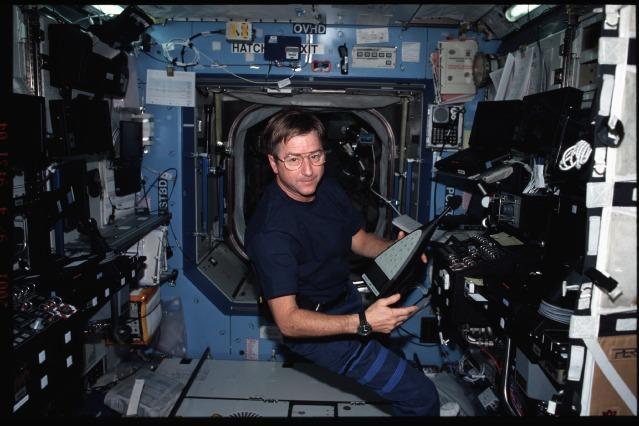
“So the plan was to call the ground on the secure circuit and encrypted circuit, so that, because it was private medical information, and talk to the flight surgeon. Uh, Dr. Steve Hart,” Culbertson said. “And so I called the ground and they finally connected me to him and I said, ‘Hey, Steve, how’s it going?’ And, you know, [I was] ready to give him the information and just catch up.”
“Cause he’s a good friend, Steve said, ‘well, Frank, we’re not having a very good day down here on Earth,'” he continued. “And my first thought was there must’ve been an accident or some family member has a problem, or who knows what, but I’m sure he’s gonna tell me, but I was a little leery of what it might be.”
When Culbertson first called Hart, two hijacked airliners had already struck the Twin Towers in New York City, while a third had slammed into the Pentagon in Washington, D.C. While the two men were on the phone, news broke that a fourth had crashed in Pennsylvania. That aircraft, a Boeing 757 flying that day as United Airlines Flight 93, was the only one not to reach its intended target, which had been the Capitol building in Washington, after passengers overpowered their captors.

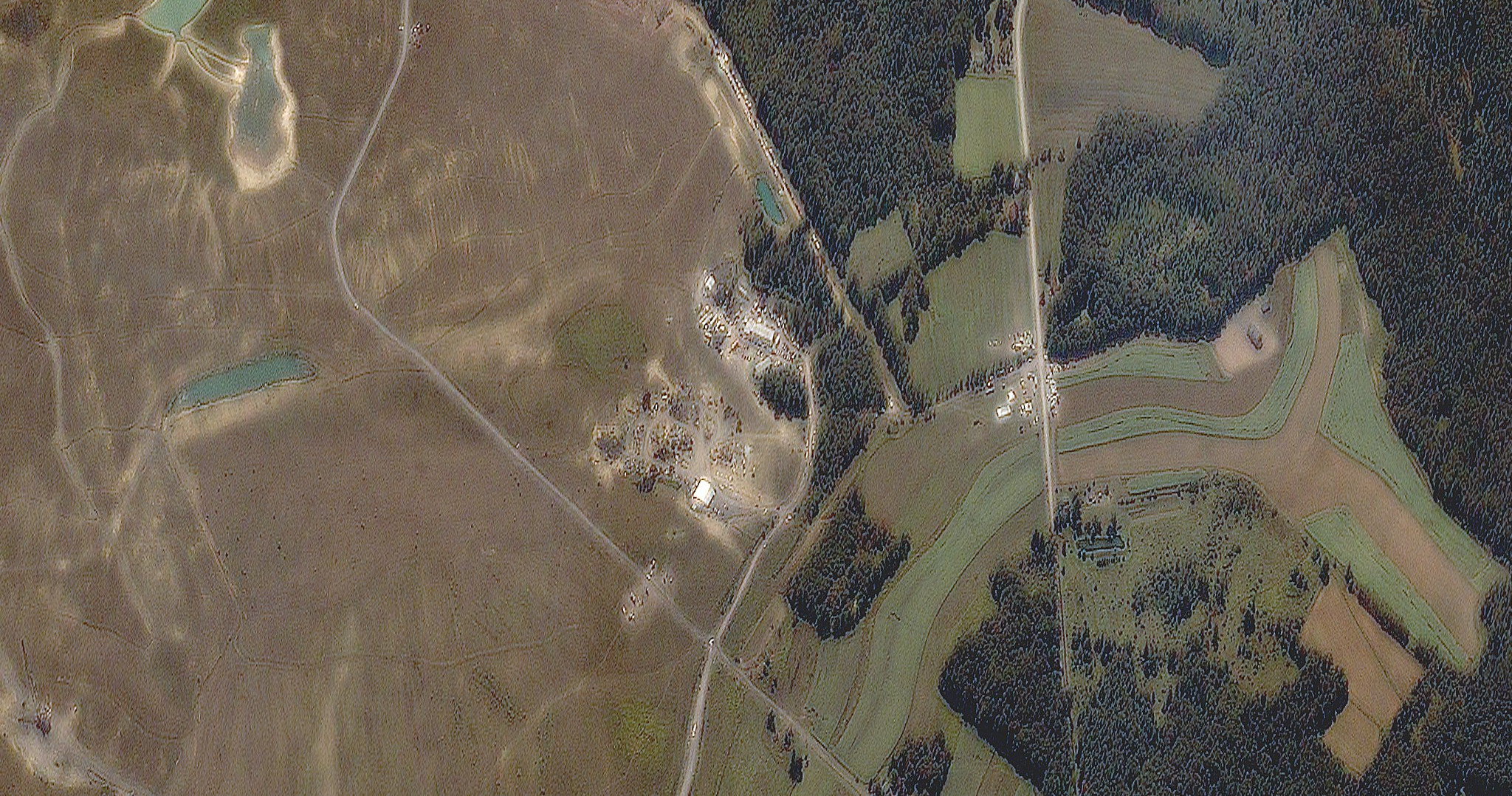
It eventually emerged that these attacks were part of an elaborate plot carried out by the terrorist group Al Qaeda. A total of 2,977 people died.
“The other odd thing was I was halfway through Tom Clancy’s A [sic; The] Sum of All Fears on an audiobook. Fabulous book,” Culbertson said, remarking on how surreal it all felt. “I thought, am I in a book? Is this a movie? I mean, is this real? And just kind of fleeting thoughts and as he’s [Hart’s] describing it and, you know, asked a few questions, I call my crewmates in to where we were talking in the laboratory.”
“They needed to hear what was going on. And of course, they were very concerned and very serious. Russia had been attacked by terrorists several times in the preceding couple of years,” he noted, adding that 94 Russians died in the World Trade Center towers. “And, uh, you know, we had no idea how widespread this attack was going to be, how many countries might be involved.”
Culbertson eventually realized the station’s orbit was taking it over Canada and that the northeastern portion of America, including New York City, would soon be visible. As the ISS continued on its course, some 230 miles above the surface of the Earth, the tragedy came into view.
“It actually was Michael’s bedroom window that I was looking out of. And [I] clearly see the smoke rising out of New York, out over Long Island, over the Atlantic,” the former astronaut recalled. “So it made it easy to zoom in with the camera and look at what was happening. And as I zoomed in, a big gray blob, enveloped Southern Manhattan, and it turned out, I found out later, what I was seeing was the second tower come down.”
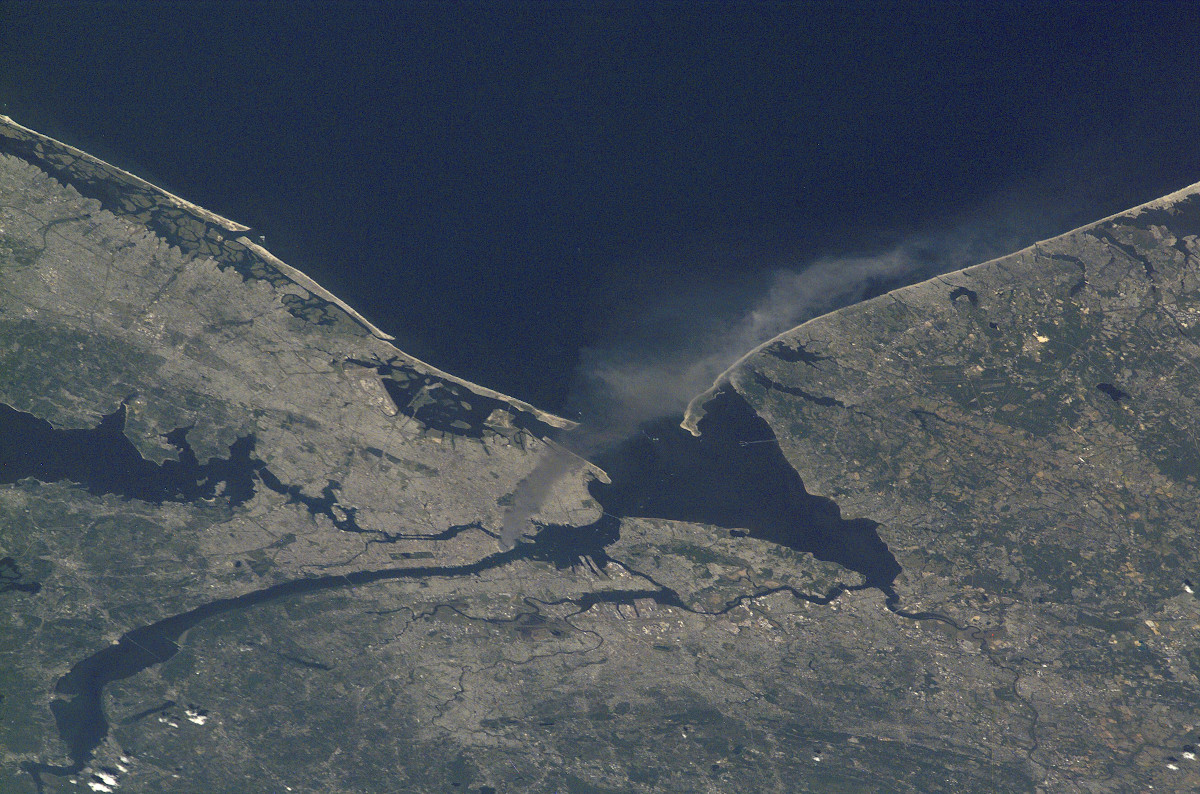
“To me, it was just explosions. And, and again, you’re 230 miles above the Earth… And traveling at five miles a second. So it’s going away pretty quickly and I stayed focused on it as long as I could,” he continued. “I made some comments and said some words about bringing these people to justice and how much it hurt me to see my country under attack.”
The ISS completed one orbit around the Earth every 90 minutes or so. Culbertson, together with Dezhurov and Tyurin, used that time to set up more still and video cameras to be able to get more shots of what happening down below on the next pass. The second time around they also saw smoke coming from Washington, D.C., where the Pentagon had been hit. Culbertson also remarked to Cooper about what they didn’t see.
“Almost all of the contrails that are normally a spiderweb over the United States had disappeared because they had grounded all the airplanes,” he explained. “Except for one airplane that I saw streaking across the country, which, for a long time, I thought was Air Force One, trying to get the president back.”
One of the U.S. Air Force’s VC-25A presidential aircraft, commonly referred to as Air Force, carrying President George W. Bush and others, was one of the only planes in the sky over America after the attacks. Culbertson says, based on a conversation he subsequently had with a U.S. military pilot who had been flying that day, that he now believes the plane he saw was an “airborne command post” aircraft, possibly an E-3 Sentry Airborne Warning and Control System (AWACS) jet, that was diverted from a training mission to “control the fighters on the east coast.” E-4B Nightwatch National Airborne Operations Centers (NAOC), commonly referred to as “Doomsday Planes,” were also in the air.
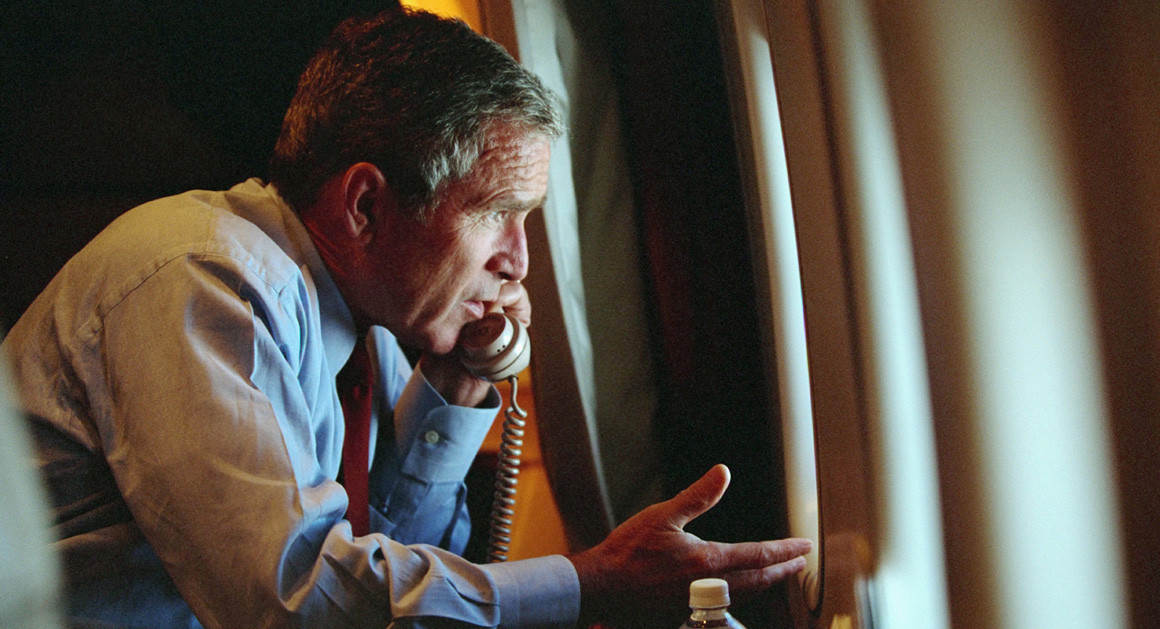
Culbertson, along with the Russian cosmonauts on the ISS, continued to get other sporadic updates on the situation over the course of the day and into the next. The day after he wrote a letter with his immediate reactions that NASA subsequently published, along with a second one two days later.
“It’s horrible to see smoke pouring from wounds in your own country from such a fantastic vantage point,” he had written. “The dichotomy of being on a spacecraft dedicated to improving life on the earth and watching life being destroyed by such willful, terrible acts is jolting to the psyche, no matter who you are.”
It was also on Sept. 12 that he received word of a more personal detail regarding the attacks. Culbertson had attended the Naval Academy with Chic Burlingame, who had also become a naval aviator, and the two had been friends since 1967. On Sept. 11, Burlingame had been the pilot of American Airlines Flight 77, the Boeing 757 that smashed into the Pentagon.
“We played the drum and bugle Corps together. We both were trying to fly the F-4 Phantom at the same time,” Culbertson said. “And we’d known each other since 1967. And so it became very personal.”
With no one really knowing at that point whether the 9/11 attacks were a singular incident or the start of something broader, Culbertson’s remarks to Cooper seem to suggest that speculation about what might happen next was rife. Don Pettit, one of the individuals supporting Expedition 3 back on Earth, decided to send an Email about the potential for a ballistic missile attack on the ISS.
“He sent me an email and said, ‘Hey Frank, I just want you to know I’ve done the calculations and they actually could hit you with a Scud missile if they got lucky, because they can get to that altitude. It’s not guided, but you know, they might get lucky,'” Culbertson recalled. “And I said, ‘thanks for [that] Don. Thanks a lot for that.’… I gave him grief about that when I got back.”
The Space Foundation’s Cooper also pointed out that astronauts often do remote engagements with schools and others in the community from the ISS. Culbertson said that he was scheduled to do a number of these kinds of events beforehand. In November, before coming back, he had spoken to kids from a public school just blocks from Ground Zero in New York City.

“They had to change schools three times over the next week because of all the rescue and recovery operations that were going on,” he remembered, adding that it was not clear if it was going to be possible to make contact with them in the end. “I did make contact with the, with the school, answered their questions as thoroughly as I could.”
Expeditionary 3 to the ISS ultimately ended, as scheduled, on Dec. 15, 2001. Culbertson, Dezhurov, and Mikhail Tyurin all made it safely back to Earth. By that point, personnel from the Central Intelligence Agency and U.S. Army Special Forces units had already moved into Afghanistan, where Al Qaeda had its main base of operations. Providing local groups with American airpower and other resources, they had helped unseat the nominal government in the country at the time, led by the Taliban, before the year was out.
The Taliban have, of course, just returned to power after the stunningly collapse of the U.S.-backed government in Afghanistan amid the planned withdrawal of American troops after nearly two decades, which subsequently turned into a controversially chaotic and deadly evacuation mission. The group now looks set to announce the formal establishment of its new government on Sept. 11, which will only add a new layer to the many emotions that the anniversary always stirs up.
For Culbertson, he came back to an Earth that was already shifting in monumental ways. “I was prepared for it. I mean, people have been sending me pictures and descriptions of what had happened in the days and weeks afterwards, and what changes have been made in security and with the airports, et cetera, and how a lot of things just weren’t accessible anymore,” he explained. Still, “we did, we did come back to a different world and as we reacclimated and, you know, had to travel around the country around the world to, you know, for post-flight or to do our business or go anywhere. We saw it clearly. So for us, it was a big change.”
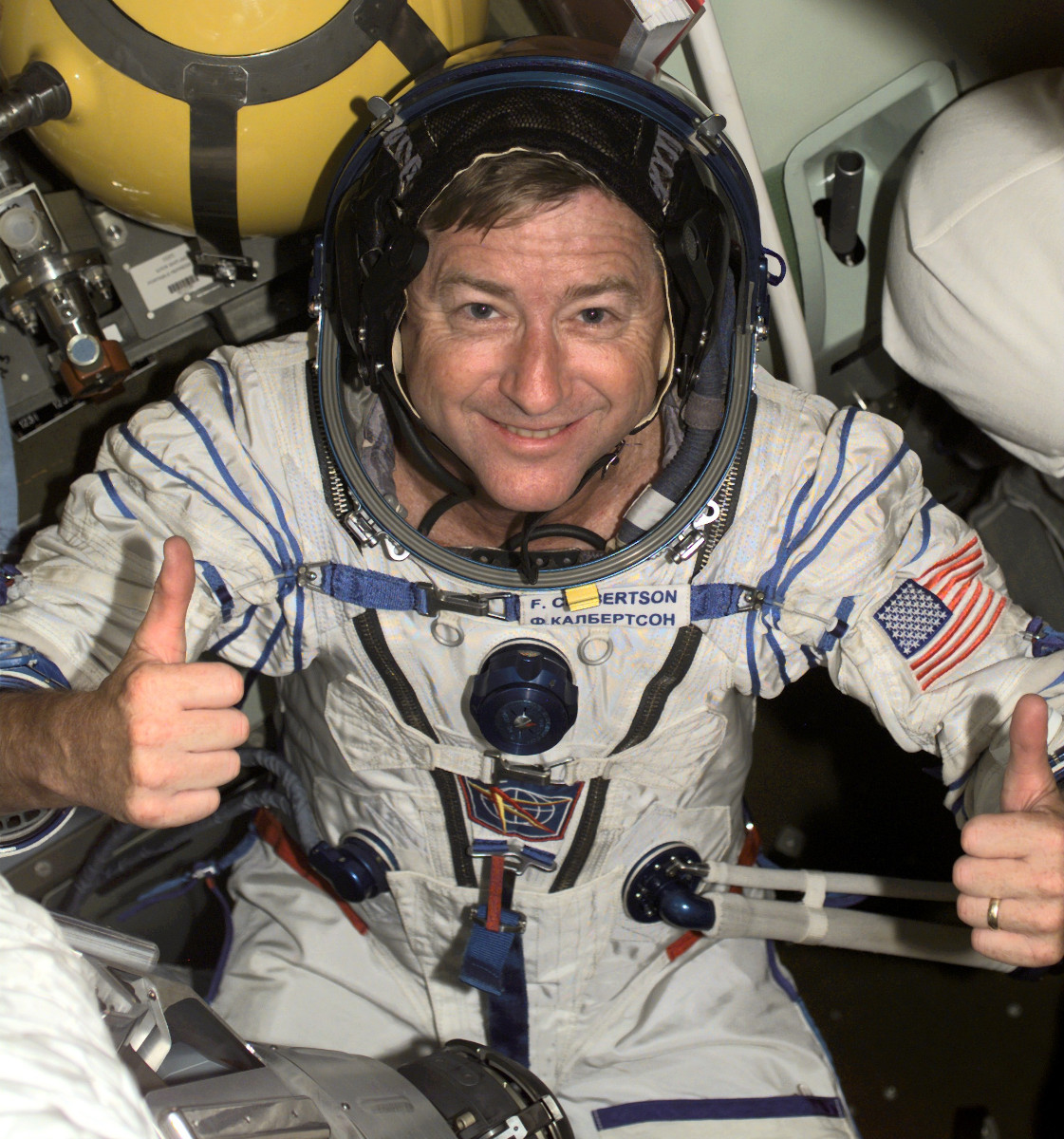
“The, the events of … this past week in Afghanistan remind us of how fragile peace can be and how fragile our nation and civilization and constancy can be, if we don’t maintain security the way we should,” Culbertson further told Cooper in a concluding statement on the podcast. “So I’m concerned about where things are going right now and whether anything else will happen.”
“We need to value those freedoms, as well as value our security, and pay attention, as things change around the world,” he added. “By the same token, when you accomplish great things together, as international partners, it strengthens all the countries involved and sets a good example for how people should, should behave.”
Though this year’s 9/11 anniversary does seem to come at a time of particular uncertainty in many respects around the world, we here at The War Zone are certainly grateful that Culbertson has been willing and able to share his unique perspective on the infamous moment in human history. These kinds of very personnel recollections are key to ensuring that, whatever the future might hold, no one forgets what happened on that terrible day.
Contact the author: joe@thedrive.com
